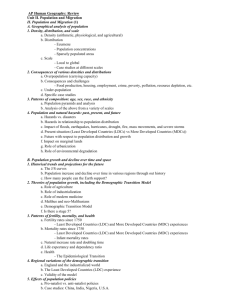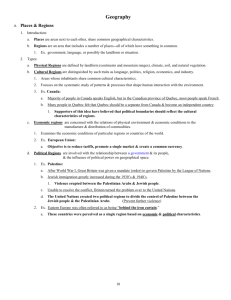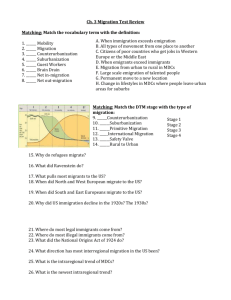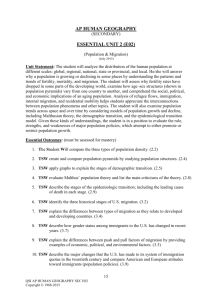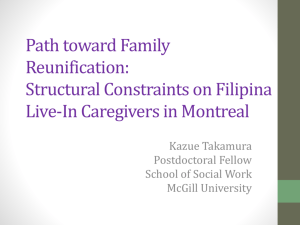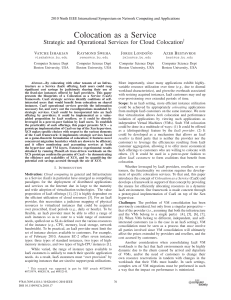File - AP Human Geography
advertisement
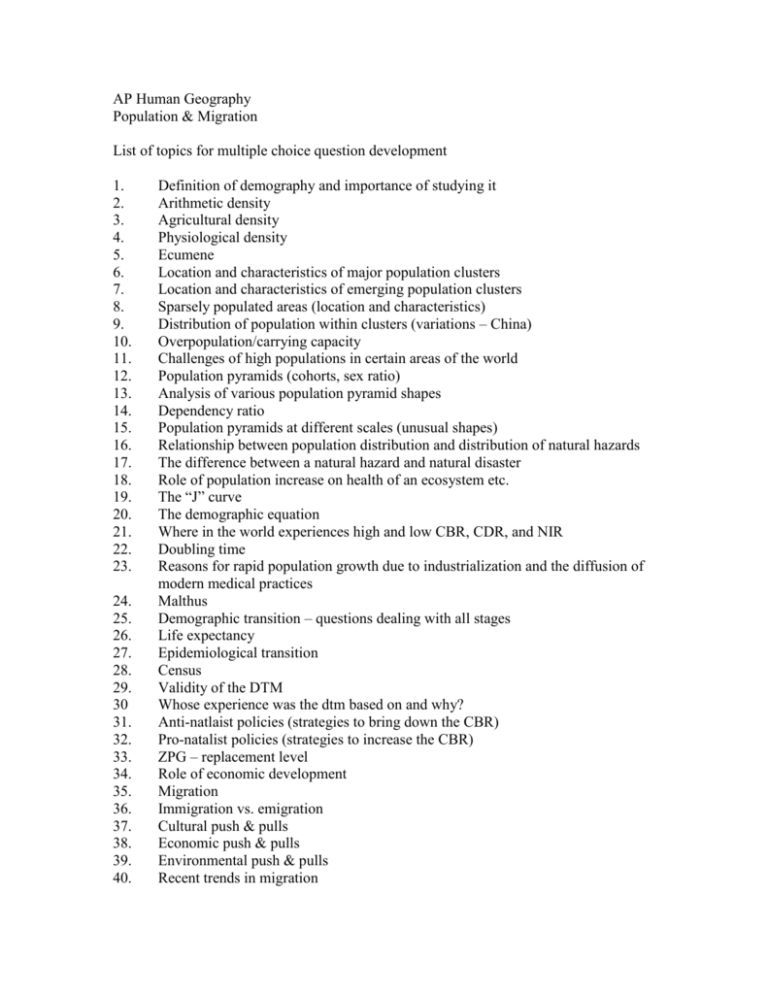
AP Human Geography Population & Migration List of topics for multiple choice question development 1. 2. 3. 4. 5. 6. 7. 8. 9. 10. 11. 12. 13. 14. 15. 16. 17. 18. 19. 20. 21. 22. 23. 24. 25. 26. 27. 28. 29. 30 31. 32. 33. 34. 35. 36. 37. 38. 39. 40. Definition of demography and importance of studying it Arithmetic density Agricultural density Physiological density Ecumene Location and characteristics of major population clusters Location and characteristics of emerging population clusters Sparsely populated areas (location and characteristics) Distribution of population within clusters (variations – China) Overpopulation/carrying capacity Challenges of high populations in certain areas of the world Population pyramids (cohorts, sex ratio) Analysis of various population pyramid shapes Dependency ratio Population pyramids at different scales (unusual shapes) Relationship between population distribution and distribution of natural hazards The difference between a natural hazard and natural disaster Role of population increase on health of an ecosystem etc. The “J” curve The demographic equation Where in the world experiences high and low CBR, CDR, and NIR Doubling time Reasons for rapid population growth due to industrialization and the diffusion of modern medical practices Malthus Demographic transition – questions dealing with all stages Life expectancy Epidemiological transition Census Validity of the DTM Whose experience was the dtm based on and why? Anti-natlaist policies (strategies to bring down the CBR) Pro-natalist policies (strategies to increase the CBR) ZPG – replacement level Role of economic development Migration Immigration vs. emigration Cultural push & pulls Economic push & pulls Environmental push & pulls Recent trends in migration 41. 42 43. 44. 45. 46. 47. 48. 49. 50. 51. 52. 53. 54. 55. 56. 57. 58. 59. 60. Distance decay Gravity model Waves of immigration to the United States etc. European immigration since 1970 Chain migration Step migration Intervening obstacles and opportunities Zelinsky’s migration transition Slave trade (involuntary migration) Refugees Partition of India The Soviet experience (internal migration) Environmental degredation Interregional migration in Europe and the U.S. Place perception Transhumance Guest workers Activity space Intraregional migration (rural to urban & urban to rural) Conurbanization




